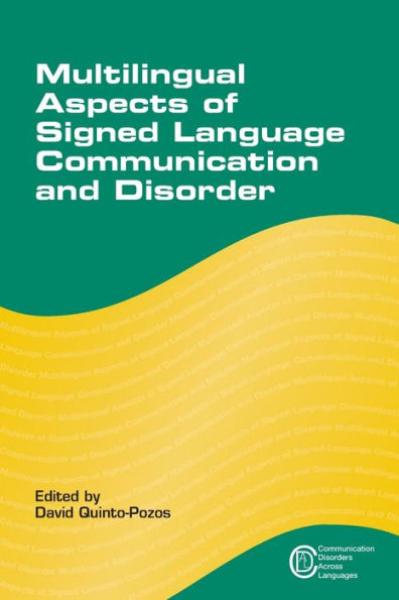Description
This book brings together work on communication disorders of child and adult users of signed languages. The chapters investigate linguistic impairments caused by deficits in visual processing and motor movements, as well as neurological decline. It also contains suggestions ab...
David Quinto-Pozos is an Assistant Professor in the Department of Linguistics, University of Texas at Austin, USA. His research focuses on signed language, communication disorder, language acquisition and the interaction between language and gesture in the signed modality.
This book brings together an impressive group of contributors to present pioneering research on signed language and the manifestation of communication disorders in a visual-motor modality. Readers will undoubtedly appreciate the emphasis on bilingual considerations and the innovative recommendations for improving identification and future needs for treatment research.
-- "Pamela A. Hadley, University of Illinois at Urbana-Champaign, USA"This valuable volume provides a rich resource of tools and state-of-the-art methods for investigating signed language communication disorders across the life span. Each chapter fills a critical gap in our knowledge of communication differences and disorders in the visual-manual modality. Moreover, the findings presented in this book have significant implications for theories of language disorders that have been developed solely from spoken language data.
-- "Karen Emmorey, San Diego State University, USA"This book brings together an impressive group of contributors to present pioneering research on signed language and the manifestation of communication disorders in a visual-motor modality. Readers will undoubtedly appreciate the emphasis on bilingual considerations and the innovative recommendations for improving identification and future needs for treatment research. - Pamela A. Hadley, University of Illinois at Urbana-Champaign, USA
This valuable volume provides a rich resource of tools and state-of-the-art methods for investigating signed language communication disorders across the life span. Each chapter fills a critical gap in our knowledge of communication differences and disorders in the visual-manual modality. Moreover, the findings presented in this book have significant implications for theories of language disorders that have been developed solely from spoken language data. - Karen Emmorey, San Diego State University, USA
This valuable volume provides a rich resource of tools and state-of-the-art methods for investigating signed language communication disorders across the life span. Each chapter fills a critical gap in our knowledge of communication differences and disorders in the visual-manual modality. Moreover, the findings presented in this book have significant implications for theories of language disorders that have been developed solely from spoken language data. - Karen Emmorey, San Diego State University, USA
Product Details
- Multilingual Matters Limi Brand
- Feb 10, 2014 Pub Date:
- 1783091290 ISBN-10:
- 9781783091294 ISBN-13:
- 264 Pages
- 9.22 in * 6.39 in * 0.65 in Dimensions:
- 1 lb Weight:




